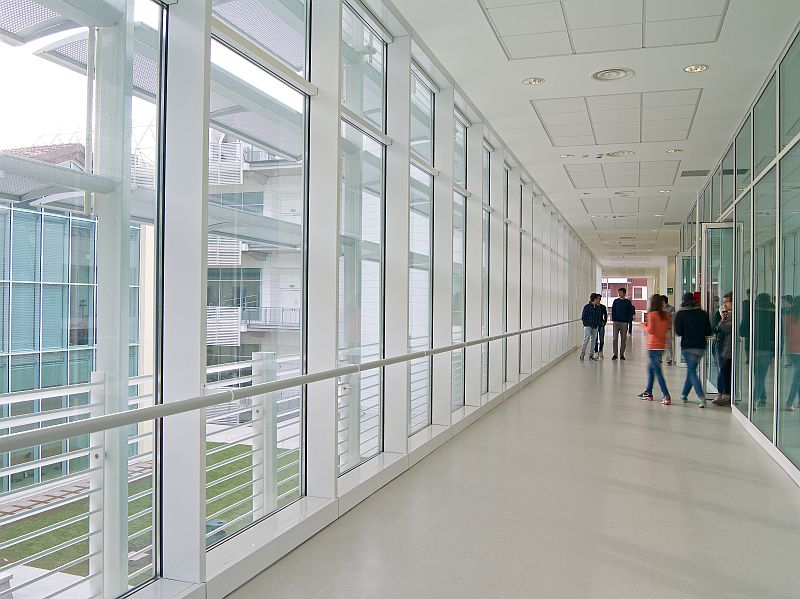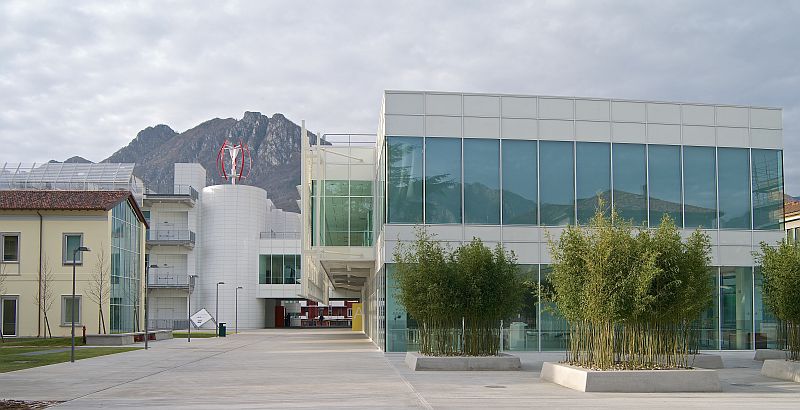POLITECNICO DI MILANO – POLO DI LECCO CAMPUS
The conference Therminic 2019 will be held at Polo di Lecco Campus that is one of several international campuses of the Politecnico di Milano. Ever since 2006, year in which the Master Programs in English were first introduced, the presence of international students has steadily increased. In the first seven years of these programs, a total of 621 students from all over the world have participated.
Today, 19% of the entire student population who lives and studies in Lecco, and which amounts to more than 1,600, are foreign students. This constant growth rate seems to predict greater international participation in the near future.
Consequently, our campus is a multicultural platform where students can practice and improve their knowledge of English as well as develop long-lasting friendships with others from diverse linguistic and ethnic backgrounds.
Polo di Lecco have a brand new university campus: 40,000 m2 dedicated to instruction, research and student services. This means modern classrooms where innovative teaching can take place, “state-of-the-arts” labs, and on-campus living space for 204 international and non-resident of Lecco students.
Politecnico di Milano is one of the most outstanding universities in Europe. In the latest QS World University Rankings the university earns 13 positions with respect to last year (and 60 positions in the last 5 years) becoming the 170th best university in the World. Politecnico gains 11 positions in Europe, passing from 85th to 74th place and, for the third year, it is confirmed the first University in Italy. In the QS Ranking by Subject 2017 has achieved an excellent positioning in the areas that characterize its research activity: among the first 50 universities in the world in Architecture and Built Environment; Art & Design; Civil & Structural Engineering; Computer Science & Information Systems; Electrical & Electronic Engineering; Mechanical, Aerospace and Manufacturing Engineering, and among the first 100 universities in Business & Management Studies; Chemical Engineering; Materials Sciences; Mathematics.
Thanks to these results, according to the QS World University Ranking – Engineering & Technology 2017, Politecnico is ranked 24th in the World, 7th in Europe and 1stin Italy among technical universities. Founded in 1863, it is the largest school of architecture, design and engineering in Italy, with three main campuses located in Milan, the heart of fashion and design industries and venue of Expo 2015, and five more premises around the Lombardy region. Many important scientists and architects studied and taught here; among them Achille Castiglioni, Gio Ponti, Renzo Piano and Aldo Rossi, both Pritzker Prize in 1990 and 1998 respectively, and Giulio Natta, Nobel Prize in Chemistry in 1963.
The Politecnico di Milano is organized into 12 departments, responsible for planning of the research strategies, and 4 schools, responsible for the organization of education. Among these, 2 schools cater for the different fields of engineering and 2 schools for the fields of architecture and industrial design. Thanks to a strong internationalization policy, many programs are taught entirely in English, attracting an ever-increasing number of talented international students, which now form a diverse community from more than 100 different countries. In the academic year 2015/2016, 21% of the total students enrolled on Master of Science Programs were international.
Inter and multidisciplinarity is fostered throughout the academic path, and it is the methodological approach of the Phd School and the ASP (Alta Scuola Politecnica), a school for young talents from all over the world, who develop their skills in a teamwork context to pursue complex innovation projects. Teaching is increasingly related to research, a key commitment that enables to achieve results of high international standards, while creating connections with the business world. Strategic research is carried out mainly in the fields of energy, transport, planning, management, design, mathematics and natural and applied sciences, ICT, built environment, cultural heritage, with more than 250 laboratories; among these, also a Wind Tunnel and a Crash Test centre.

